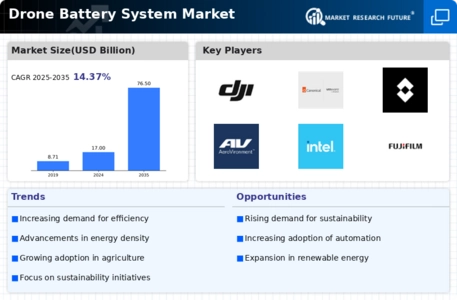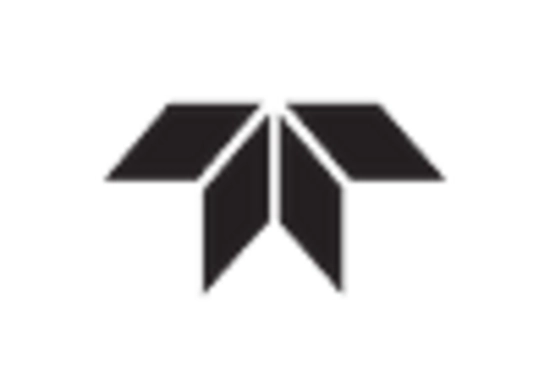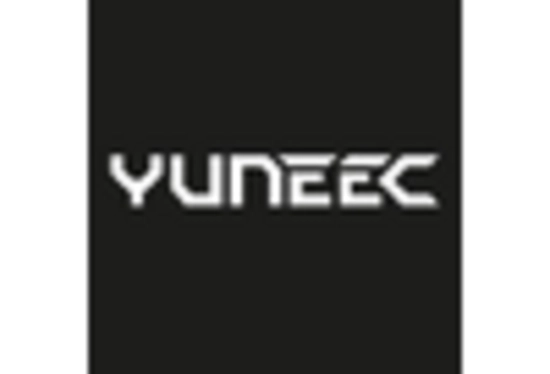Regulatory Support for Drone Operations
Regulatory support for drone operations is a crucial driver for the Drone Battery System Market. Governments are establishing frameworks that facilitate the safe integration of drones into airspace, which encourages investment in drone technology. As regulations evolve to accommodate commercial drone use, the demand for robust battery systems that comply with safety standards is likely to increase. This regulatory environment not only fosters innovation but also instills confidence among businesses looking to adopt drone technology. Consequently, the Drone Battery System Market stands to benefit from these supportive measures, potentially leading to accelerated market growth.
Expansion of Delivery and Logistics Services
The expansion of delivery and logistics services is significantly impacting the Drone Battery System Market. With the rise of e-commerce, companies are increasingly deploying drones for last-mile delivery solutions. This trend necessitates the development of high-capacity battery systems that can support longer delivery routes and faster service times. According to industry estimates, the drone delivery market is expected to grow substantially, creating a corresponding demand for advanced battery technologies. As logistics companies invest in drone fleets, the Drone Battery System Market is poised for growth, driven by the need for efficient and reliable battery solutions.
Technological Innovations in Battery Systems
Technological advancements in battery systems are driving the Drone Battery System Market forward. Innovations such as lithium-sulfur and solid-state batteries are emerging, offering higher energy densities and improved safety profiles compared to traditional lithium-ion batteries. These advancements not only extend the operational range of drones but also reduce charging times, making them more efficient for commercial applications. The introduction of smart battery management systems further enhances performance by optimizing energy usage. As these technologies mature, they are likely to reshape the competitive landscape of the Drone Battery System Market, attracting investments and fostering new product developments.
Growing Focus on Environmental Sustainability
The Drone Battery System Market is increasingly influenced by the global emphasis on environmental sustainability. As organizations strive to reduce their carbon footprints, the demand for eco-friendly battery solutions is rising. Companies are exploring alternative materials and recycling methods to minimize waste and enhance the lifecycle of battery systems. This shift towards sustainability is not only a response to regulatory pressures but also aligns with consumer preferences for greener technologies. Consequently, the Drone Battery System Market is likely to witness a transformation as manufacturers innovate to meet these sustainability goals, potentially leading to new market entrants and partnerships.
Increased Demand for Drones in Various Sectors
The Drone Battery System Market is experiencing a surge in demand due to the increasing adoption of drones across various sectors such as agriculture, logistics, and surveillance. As industries recognize the efficiency and cost-effectiveness of drone technology, the need for reliable battery systems becomes paramount. For instance, the agricultural sector is projected to utilize drones for crop monitoring and pesticide application, which necessitates advanced battery systems to ensure longer flight times and operational reliability. This trend indicates a robust growth trajectory for the Drone Battery System Market, as companies seek to enhance their drone capabilities to meet operational demands.


















Leave a Comment